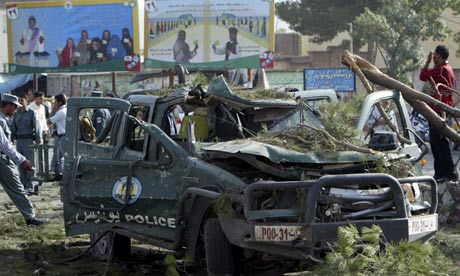At a symposium on the emerging contours of the Indo-US strategic partnership, organised by the Woodrow Wilson Centre at Princeton University on November 11-12, 2011, most participants agreed that the partnership was indispensable and that it would shape the geo-political contours of the 21st century. The present state of drift in the relationship does not portend a break down in the long term. The symposium was attended by leading members of the strategic community, including policy analysts, military experts, academics and journalists, from India and the United States.
An Indian analyst was of the view that the balance of power is shifting gradually from Europe and America to the Asia-Pacific region. He ascribed this to the ongoing rise of China and India as emerging economic and military powers. China is investing rapidly in enhancing its military capabilities as it wishes to safeguard its sea lanes of communications (SLOCs) in the Indian Ocean by deploying the PLA Navy.
A U.S. analyst identified three main trends in China’s rise: China is governed by ‘arbitrary despotism’; the main engine of economic growth, i.e. the large-scale move of rural population to urban centres is declining; and, nationalism is on the rise in China. China is likely to engage in a new Cold War with its regional neighbours and the U.S. can and must play a role in acting as a balancer.
Another U.S. analyst spelt out three core pillars of the U.S. strategy in Asia: U.S. engagement anchored by treaty obligations; developing a strong relationship with emerging Asian powers like India, Indonesia and Malaysia; and, building multilateral institutions like ASEAN for stability.
Speakers from both the countries were critical of the sense of gridlock that has gripped domestic politics, particularly when there has been an economic downturn. Both the governments appeared to have ceded space on driving the respective national agendum. There is a need to enhance diplomatic engagement and reduce the newfound proclivity for military interventionism.
An Indian analyst expressed the view that the growing Indo-US relationship merits an ‘A plus’ report card, but there are bound to be some differences in the approach of the two countries to emerging issues like the conflict in the Middle East/ West Asia and Iran’s purported quest for nuclear weapons. Indian participants conceded that India’s nuclear liability Act was problematic and that India needed to suitably address the apprehensions of international nuclear energy suppliers. However, they were of the view that the Indo-US partnership was strategic in conception and should not be reduced to a transactional relationship.
A U.S. analyst stated that international politics is about the distribution of power and the emerging relationship with India was central to the U.S. approach as a strong partnership with India would ensure a favorable distribution of power. An India that was capable and powerful was desirable from the U.S. point of view even if it did not always support U.S. initiatives. There is a perception in India that U.S. power is flagging and if this gains currency, India will have fewer incentives to go with the US.
An Indian participant stated that India is likely to join a future coalition of the willing for joint operations if the desired goal directly affects India’s vital interests. Recent joint military exercises have gone a long way towards resolving interoperability issues and have led to mutual trust and confidence. Major irritants from the Indian perspective include the continuing sale of conventional arms to Pakistan, the lack of U.S. concern about Indian interests in Afghanistan and the enduring reservations on the part of the U.S. about transferring cutting edge defence technology to India.
There was a broad consensus during the symposium that the U.S. and India must work together for peace and stability in Asia. While the Indo-US strategic partnership is not intended to form a joint front against China, should China behave irresponsibly in Asia, or should it implode due to internal instability, both India and the U.S. will need a strong partner to successfully manage the fallout.

 This week, the Taleban launched attacks in the northern cities of Herat and Taloqan. Also this week, about 200 Afghan militants crossed into northwestern Pakistan and engaged in a gun battle with Pakistani security forces. Rather than work even more closely with American forces, President Hamid Karzai of Afghanistan issued an ultimatum this week to American Forces and NATO to cease all strikes against Afghan homes. Why?
This week, the Taleban launched attacks in the northern cities of Herat and Taloqan. Also this week, about 200 Afghan militants crossed into northwestern Pakistan and engaged in a gun battle with Pakistani security forces. Rather than work even more closely with American forces, President Hamid Karzai of Afghanistan issued an ultimatum this week to American Forces and NATO to cease all strikes against Afghan homes. Why?